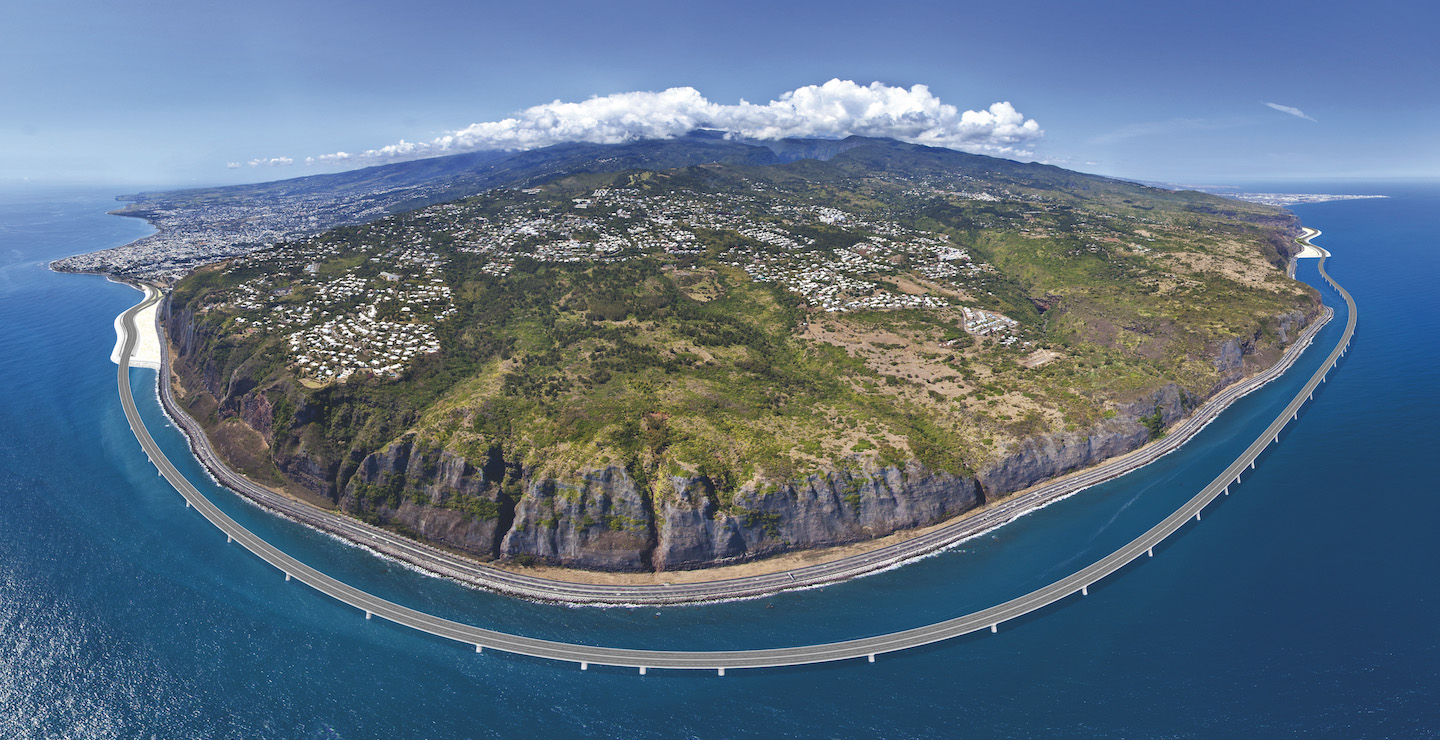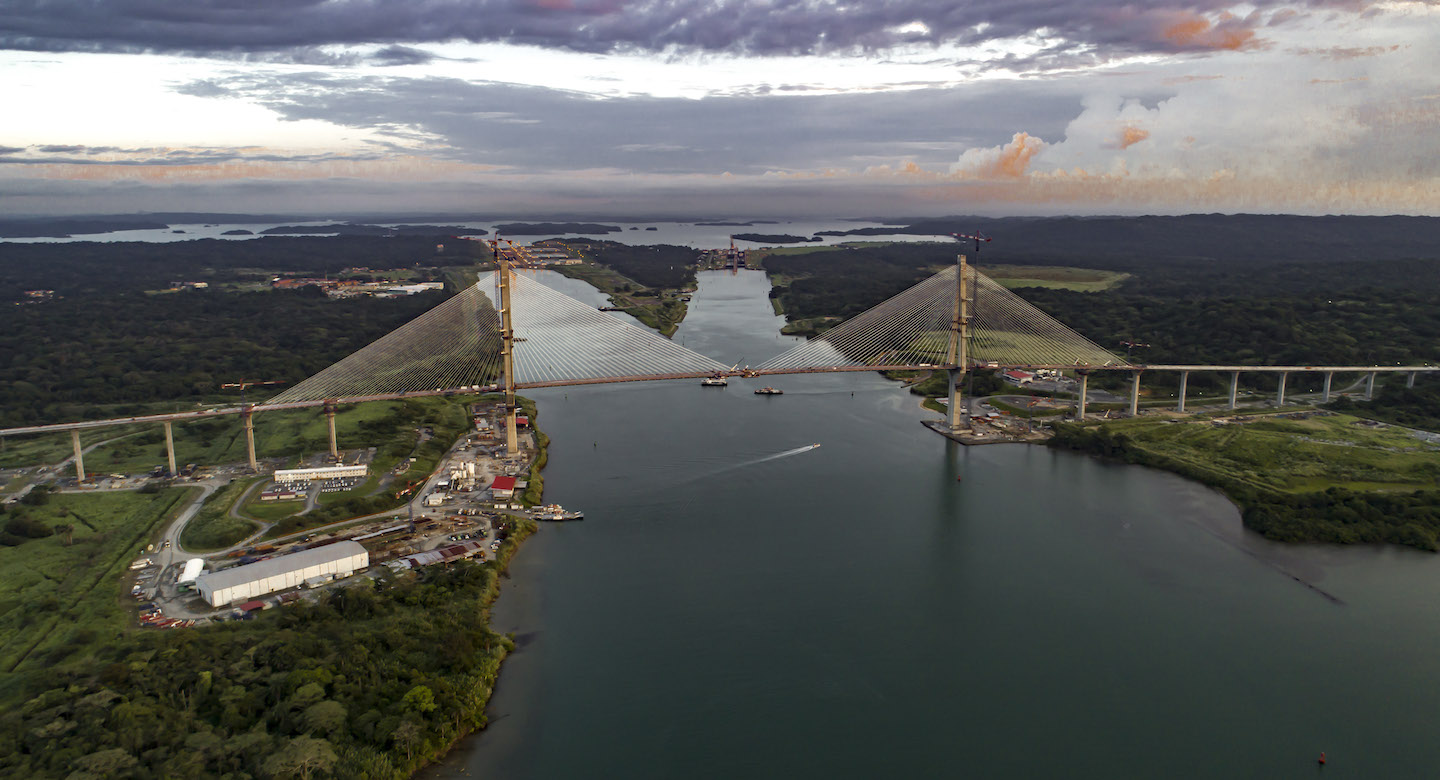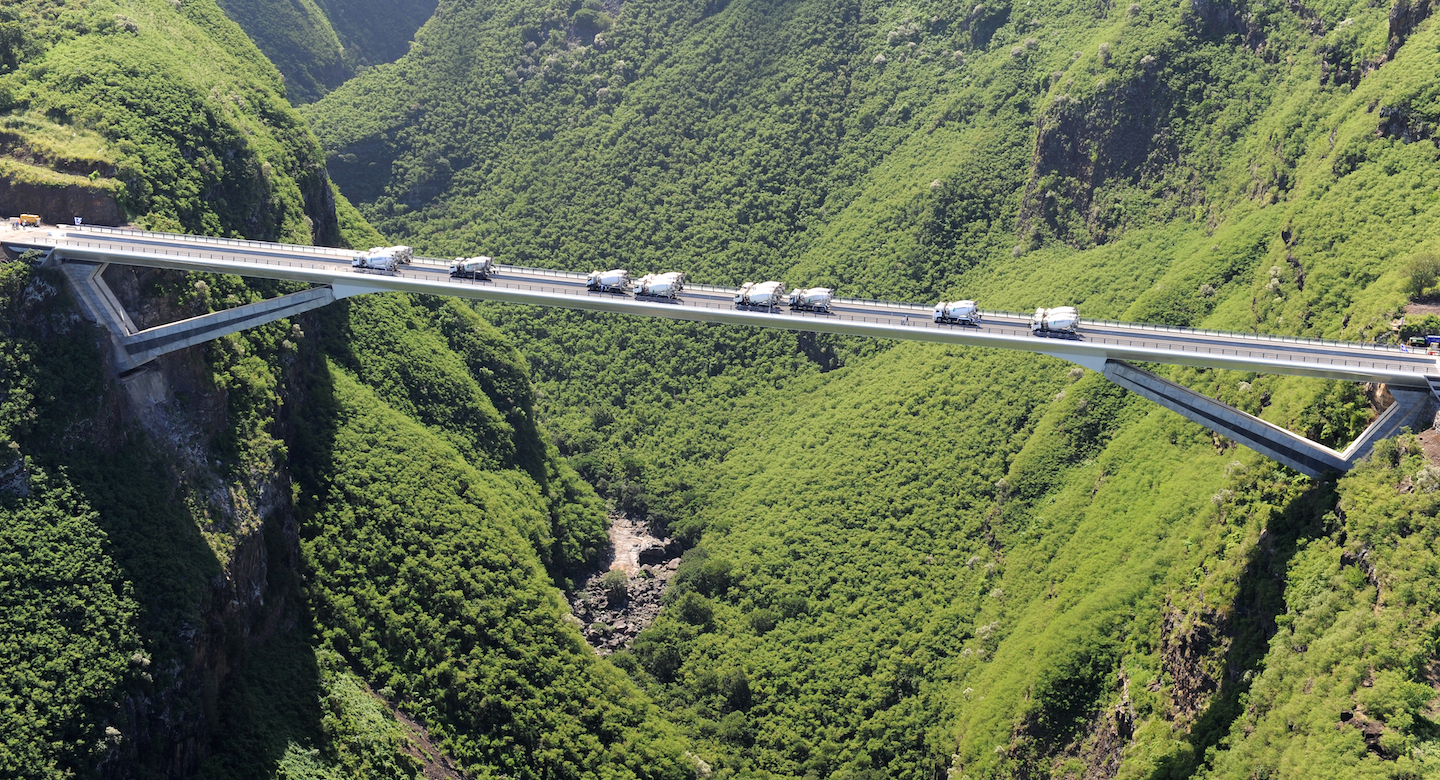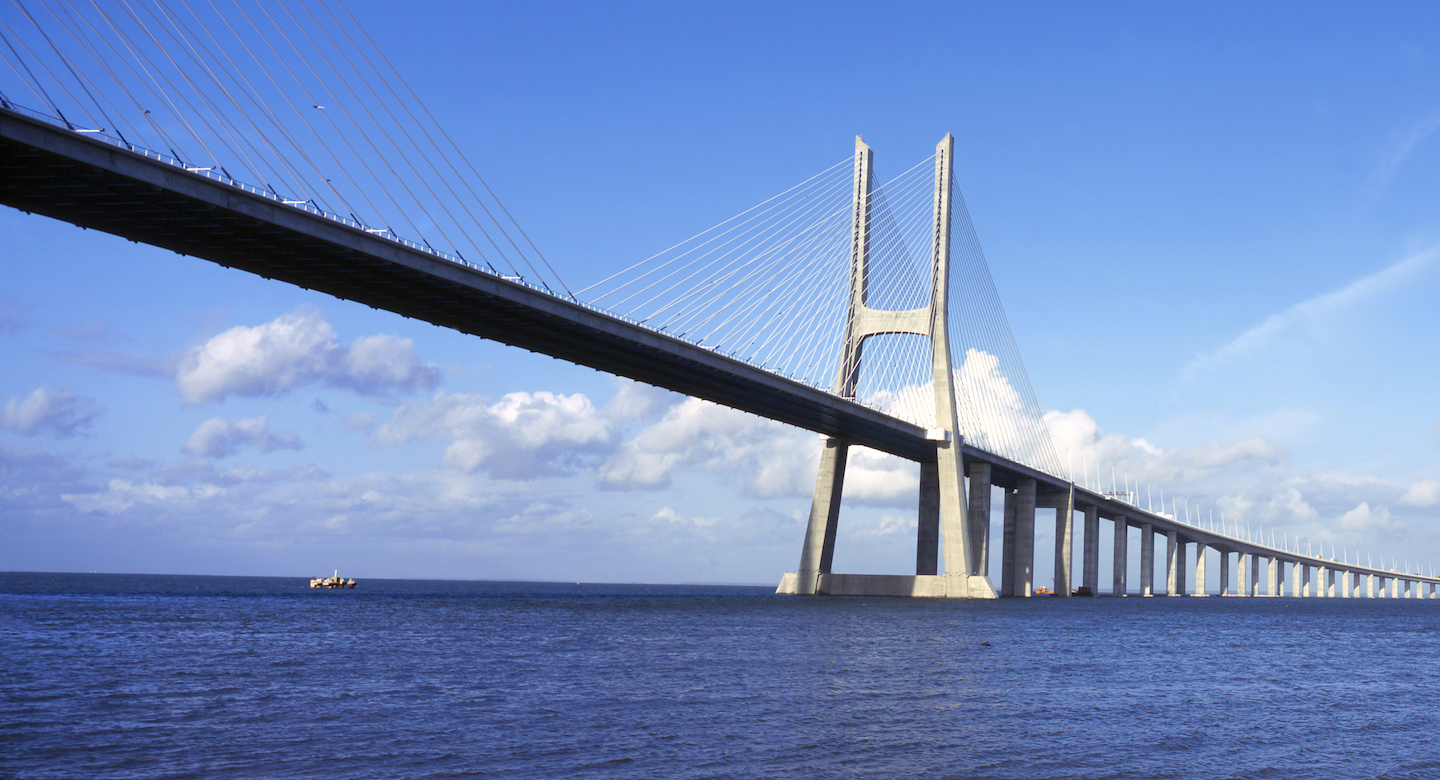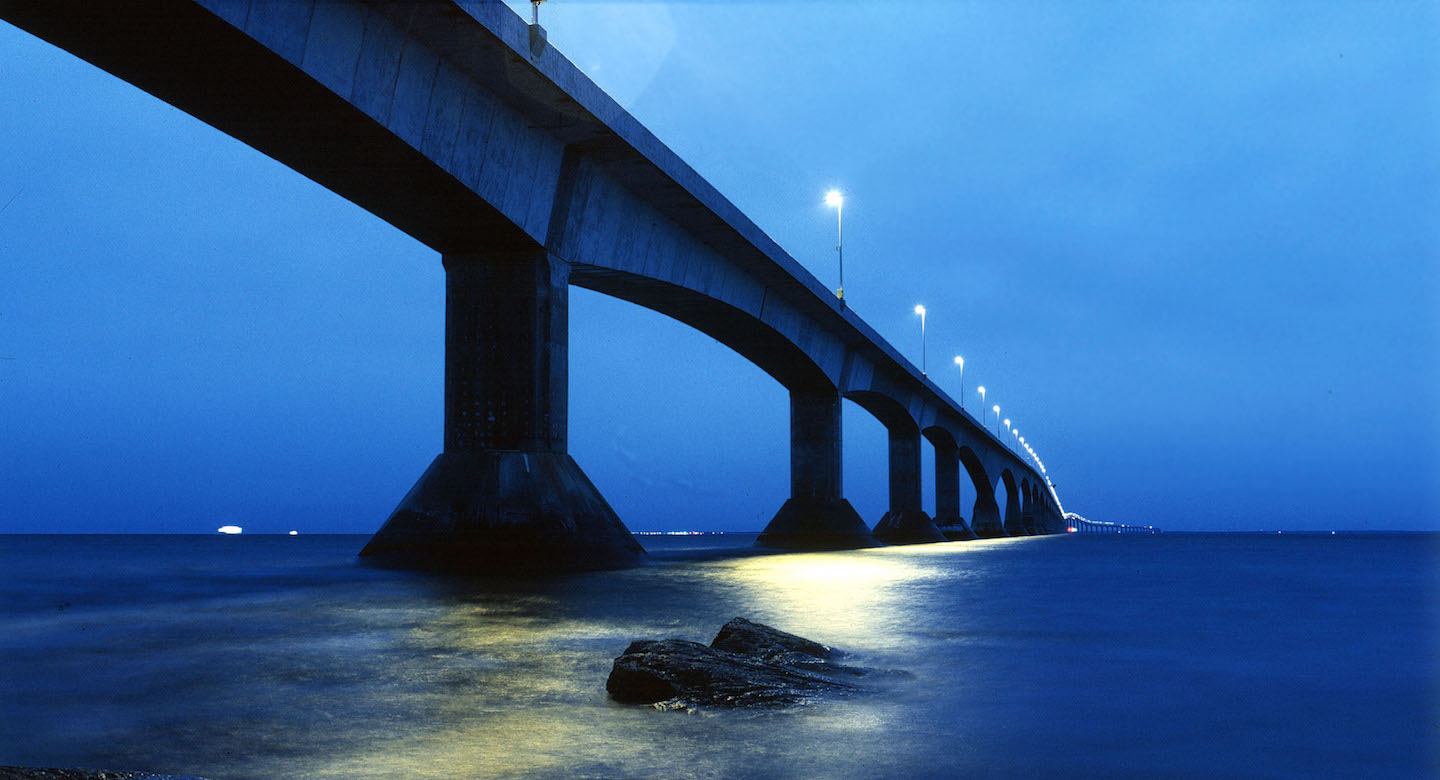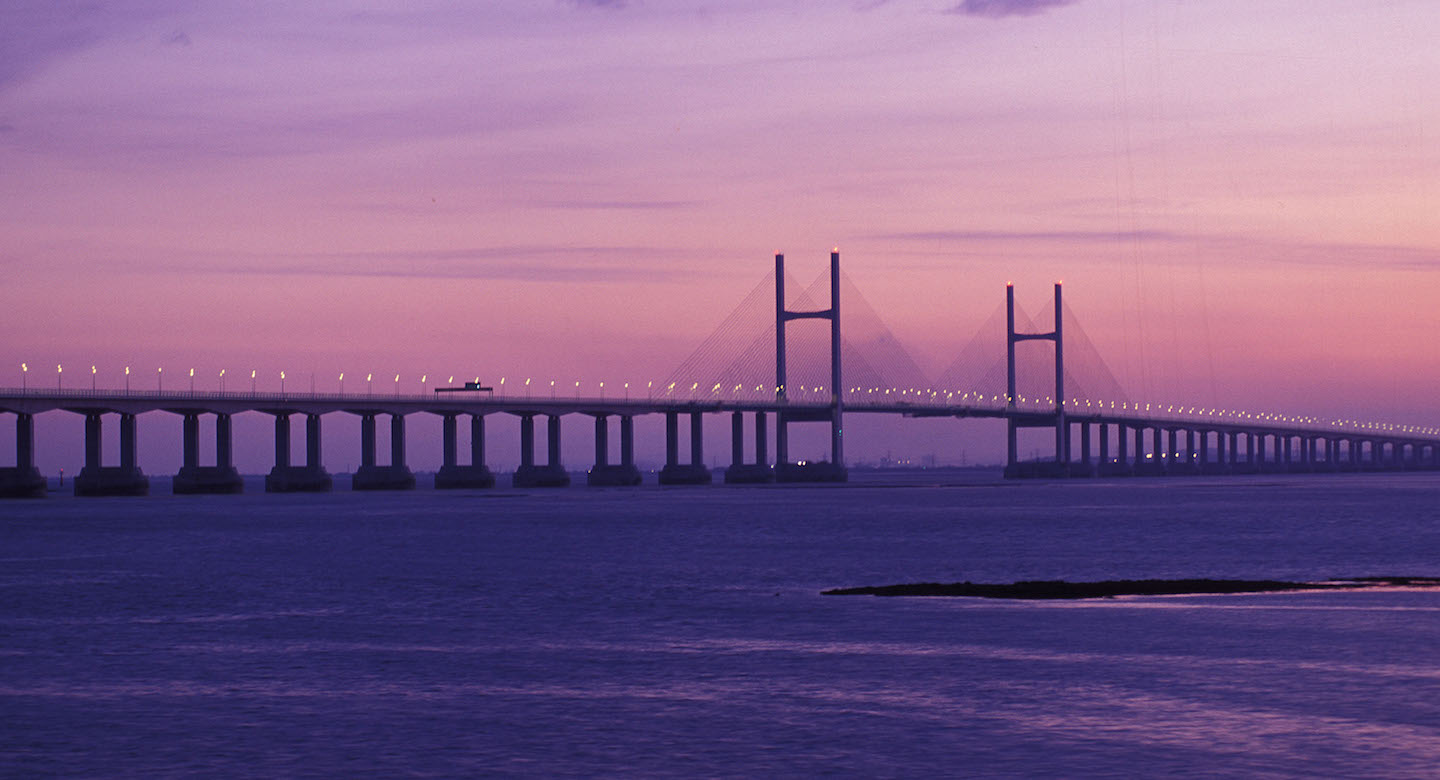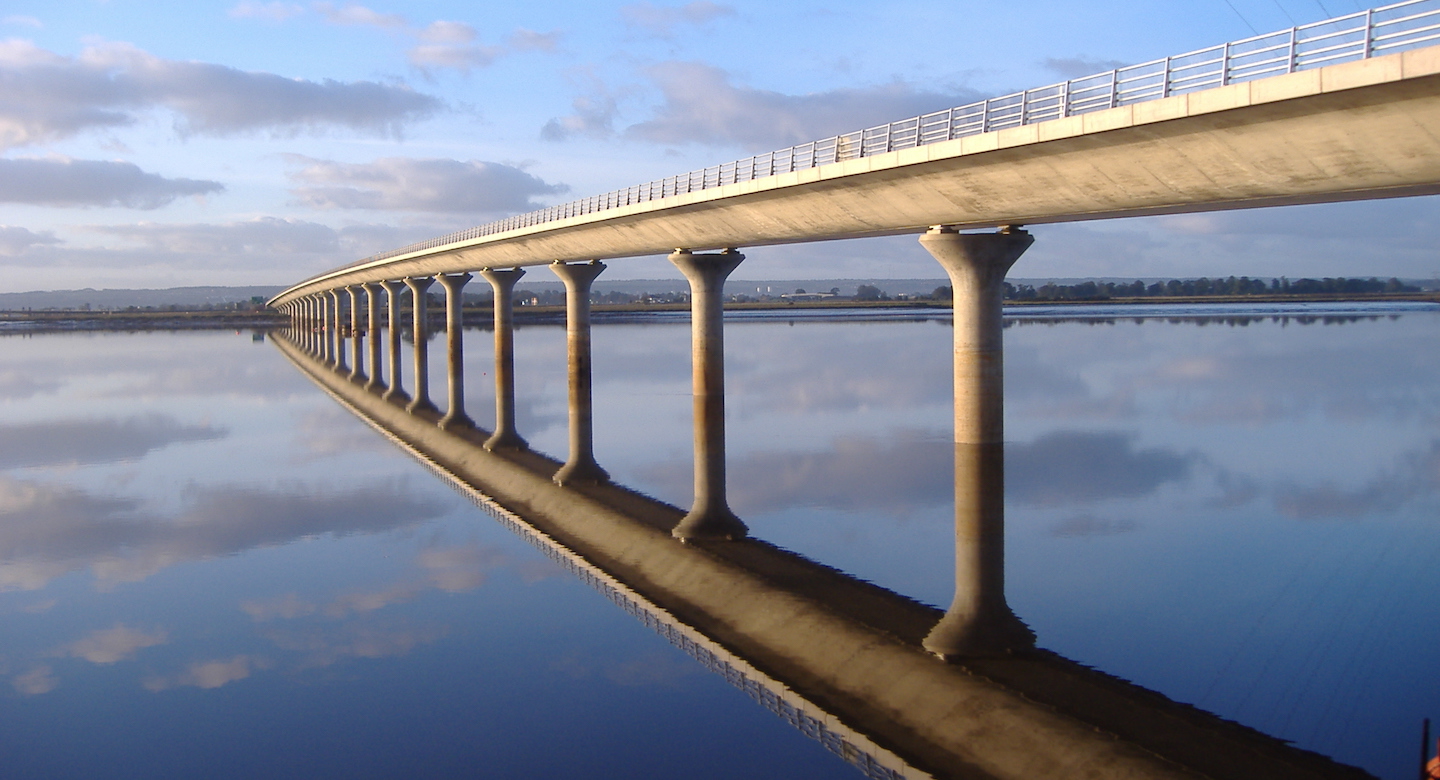Société des grands projets has awarded the contract to build the 7.4 km overhead section of line 18 of the Grand Paris Express, which will link Massy-Palaiseau to the future CEA Saint-Aubin station, to the consortium led by VINCI Construction Grands Projets. It is scheduled to come into service by 2026.
The new coastal road project is designed to provide a safer road connection between Reunion Island’s two main urban centres (Saint-Denis, the largest city, and La Possession).
This new road infrastructure is 12.5 kilometres long, and its construction was divided into several work packages. One of the two main work packages was the full-service construction of a viaduct between Saint-Denis and La Grande Chaloupe.
The contract awarded to the VINCI Construction Grands Projets consortium called for the design and construction of this 5.4-kilometre viaduct, to be built in the sea along the coastline.
VINCI Construction Grands Projets was mandated to build this cable-stayed, dual 2-lane, concrete roadway bridge that will be 1,050 metres long, with a main span of 530 metres, pylons 212.5 metres high, and a vertical clearance of 75 metres. The structure is located 3 kilometres north of the Gatun locks near the city of Colón. The bridge is designed to allow the passage of the huge Post-Panamax container ships as part of the Canal’s post-expansion operations. It will also allow vehicles to cross the Panama Canal on the Atlantic side regardless of whether the locks are in operation or not.
The project’s objective is to connect the State of Kentucky to Indiana by road, which requires the construction (in this case, as part of a design-build mandate) of a 762-metre cable-stayed bridge over the Ohio River, development (again, design-build) of a 512-metre twin-tube tunnel to access the bridge from the Kentucky side, construction of 19 engineering structures, and upgrades to the roadway network and related infrastructure in order to make this route – a 12-km dual 2-lane highway – as modern and safe as possible. The Ohio River Bridges project is the first public-private partnership (PPP) contract signed by VINCI in the United States.
Linking the Peloponnese to mainland Greece via the Strait of Corinth was a dream that many projects failed to achieve until the construction of the Charilaos Trikoupis (Rion-Antirion) cable-stayed bridge, a major technical achievement. Unique technical means were leveraged to create a span, 2,883 metres long, that would withstand extreme conditions. Accordingly, it is resistant to earthquakes of a magnitude of 7 on the Richter scale, winds of up to nearly 250 kilometres an hour, and the collision impact of a 180,000-tonne tanker moving at 16 knots. Some people say that the bridge would be the safest place in the region in the event of a strong earthquake. And motorists can now cross the strait in five minutes, instead of the 45 minutes required by the ferry.
VINCI Construction Grands Projets was approached by Reunion Island for the construction of the Grande Ravine viaduct. This viaduct is one of the four exceptional bridges built on the hillside along Route des Tamarins (dual carriageway on the west coast). This new 32-km road connects Saint-Paul with Étang-Salé to relieve the completely saturated RN1 national road. To be more specific, our contract was to construct a 288-m-long and 20-m-wide viaduct spanning the 300-m-wide and 170-m-deep Grande Ravine in the middle of Route des Tamarins. The project was launched in 2006 and completed in 2009.
Dubbed Portugal’s “construction project of the century” and the longest bridge in Europe, the Vasco da Gama Bridge, which won the first prize for civil engineering at the Hispano-American Architecture and Civil Engineering Biennial in Madrid in 2000, is an extraordinary construction inaugurated on the occasion of Lisbon’s Expo 1998. Spanning 17 km of the Tagus Estuary, the bridge is composed of five structures with a distinctive architecture. All of them are designed to resist earthquakes equivalent to the one that ravaged Lisbon in 1755 (estimated magnitude of 8.7 on the Richter scale and 250 km/h speed cyclones). The bridge connects the very developed north bank of Lisbon with the city’s more rural south bank to ensure the latter’s development while decongesting traffic in the Portuguese capital.
Linking Prince Edward Island to the rest of Canada was a project that generations of engineers had been working on since the start of the 20th century and which became reality in 1997 through the use of construction methods that could prevail over an extreme climatic environment. VINCI Construction Grands Projets was approached by Strait Crossing Development Inc. to develop, build and operate a dual-lane, 12.9-km bridge. This cantilever bridge consists of 44 piers with a 250-m span and two access viaducts in prestressed reinforced concrete.
Crossing the Severn to connect London and Cardiff meant overcoming some of the highest tides in the world. By resorting extensively to prefabrication, we were able to manage the significant risk factors inherent in this project that called for the design, construction, and operation (by concession agreement) of a 5,126-metre structure encompassing a cable-stayed bridge 948 metres long and 2 access viaducts, respectively, 2,103 and 2,077 metres long.
The 5,126-metre structure, providing 37 of overhead clearance, spans the Severn estuary, 5 kilometres downstream from an existing suspended bridge. It provides 3 lanes for traffic and an emergency lane in each direction, along with a central reservation. It is equipped with safety barriers and wind-barriers on each side.
An ongoing increase in traffic density on Kincardine Bridge gave rise to a public inquest designed to find solutions to relieve traffic congestion over the Firth of Forth span and around the town of Kincardine-on-Forth.
The solution put forward by VINCI Construction Grands Projets was to build a new bridge northwest of the existing span, thereby bypassing the city of Kincardine.
The consortium then built a 1,200-metre incrementally launched bridge over the Forth River along with 5.3 kilometres of roadway, 3 interchanges, and 4 standard engineering structures. The bridge connects 2 major thoroughfares north and south of the river, thereby providing traffic relief in this region located 40 kilometres northwest of Edinburgh.



